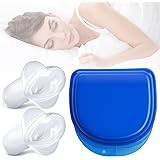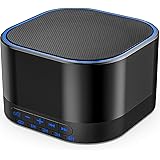Memory Foam vs Hybrid Mattress: Your Ultimate Guide to Better Sleep
You know that feeling when you walk into a mattress store, or even just browse online, and suddenly you’re swamped with terms like “memory foam,” “hybrid,” “innerspring,” “latex?” It can be incredibly overwhelming, especially when all you want is a good night’s sleep. Many of us have been there, trying to decipher the jargon to make the best choice for our comfort and wallet.
The short video above expertly highlights a fundamental question often asked: what truly sets a memory foam mattress apart from a hybrid mattress? The answer, as noted, lies primarily in their construction. However, diving deeper into these construction differences reveals a world of impact on everything from comfort and support to durability and overall value. Let’s unpack these popular mattress types, helping you understand their core characteristics and which might be the ideal foundation for your personal sleep sanctuary.
Understanding the Core Differences: Memory Foam Mattress Construction
When you hear “memory foam mattress,” envision a bed crafted entirely from layers of specialized foam. As the video explains, these beds are typically constructed with multiple foam layers, each serving a distinct purpose. The top layers are often softer and designed for plush comfort and contouring, creating that signature “hug” feeling. These comfort layers are what primarily interact with your body, cradling your curves and distributing weight evenly.
Beneath these softer upper layers, you’ll find firmer, denser foams. These base layers provide crucial stability and support for the entire mattress. The absence of traditional coils means that the entire support system of a memory foam mattress relies on the varying densities and compositions of these foam layers. Industry insights suggest that a higher density foam typically translates to better durability and support, though it can also result in a firmer initial feel.
The Science Behind Memory Foam: Comfort & Pressure Relief
The allure of a memory foam mattress stems from its unique viscoelastic properties. This material responds to body heat and pressure, softening and molding precisely to your shape. This remarkable contouring ability is particularly beneficial for pressure point relief, making it a favorite among side sleepers or individuals with joint pain. Studies have consistently shown that memory foam can significantly reduce pressure on hips, shoulders, and the lower back, promoting spinal alignment.
However, this close-conforming embrace can also be a double-edged sword. While it excels at isolating motion – a huge plus if you share a bed and don’t want to feel your partner tossing and turning – memory foam can sometimes retain body heat. Advancements in memory foam technology, such as gel infusions or open-cell structures, aim to mitigate this by improving airflow and heat dissipation. Despite these innovations, the lack of an internal coil system inherently limits the amount of air circulation compared to a hybrid alternative.
Decoding the Hybrid Mattress: Foam, Coils, and More
In stark contrast, a hybrid mattress represents a sophisticated fusion of technologies, combining the best attributes of both innerspring and foam mattresses. The video aptly describes it as being “made up of foam and coils.” This multi-layered construction typically features a core of individually wrapped pocketed coils, topped with comfort layers of various foams – which can include memory foam, latex foam, or polyfoam. Each component plays a vital role in delivering a balanced sleep experience.
The coil unit forms the dynamic support base of a hybrid. Unlike older innerspring systems, modern hybrid coils are usually individually encased. This design allows each coil to move independently, providing targeted support, minimizing motion transfer, and conforming more effectively to the body’s contours. The gauge (thickness) and number of coils can significantly influence the mattress’s feel, support level, and overall longevity. A higher coil count often indicates more detailed support and durability.
The Durability Factor: Why Hybrid Mattresses Last Longer
One of the most compelling arguments for investing in a hybrid mattress, as highlighted in the video, is its enhanced durability. Hybrid beds “tend to be more expensive, but that’s because they have more durable materials inside that will extend the life of your bed compared to foam, which is more likely to sag quicker.” The robust coil system is largely responsible for this extended lifespan. Coils are inherently more resilient to permanent compression than foam, providing consistent support over many years.
While memory foam can develop impressions or sag over time, especially in areas of concentrated pressure, the spring-back action of coils helps maintain the mattress’s structural integrity. This combination means a hybrid mattress often maintains its supportive feel for a longer period, generally offering a lifespan of 7-10 years, compared to the 6-8 years typical of an all-foam mattress. Furthermore, the open structure of the coil layer facilitates better airflow, which can contribute to a cooler sleep surface and also helps to preserve the integrity of the foam layers by preventing moisture build-up.
Cost, Lifespan, and Value: Making Your Mattress Investment
The upfront cost is often a significant consideration in any major purchase, and mattresses are no exception. Hybrid mattresses generally come with a higher price tag than their all-foam counterparts. This increased cost is a direct reflection of the more complex manufacturing process and the inclusion of diverse, often premium, materials like individually pocketed coils and multiple foam layers. On average, a quality queen-sized hybrid mattress can range from $1,500 to $3,000+, while a comparable memory foam mattress might fall between $1,000 and $2,500.
However, it’s crucial to view this not just as an expense, but as an investment in your sleep health and overall well-being. While a memory foam mattress offers excellent pressure relief, its propensity to sag quicker, as mentioned in the video, can lead to a shorter comfortable lifespan. Conversely, the enhanced durability of a hybrid mattress often translates to a better long-term value. If a hybrid lasts two years longer than a memory foam mattress, its higher initial cost per year of use might actually be lower, making it a more economical choice over time. Consumer reports frequently indicate that the blend of durability and comfort often makes hybrids a preferred choice for those seeking longevity.
Which Mattress is Right for You? Key Considerations
Choosing between a memory foam mattress and a hybrid mattress ultimately boils down to your personal preferences and sleep needs. Consider the following factors:
- Sleep Position: Side sleepers often benefit from the deep contouring and pressure relief of memory foam. Back and stomach sleepers, who require more robust spinal alignment, might prefer the balanced support of a hybrid mattress.
- Body Type: Heavier individuals may find the additional support of a hybrid’s coil system more beneficial in preventing premature sagging and ensuring proper alignment. Lighter individuals might find either option comfortable.
- Temperature Sensitivity: If you tend to sleep hot, the increased airflow through a hybrid’s coil system will likely offer a cooler sleep experience compared to traditional memory foam.
- Motion Isolation: For couples, memory foam is exceptionally good at absorbing motion, meaning you’re less likely to be disturbed by your partner’s movements. Hybrids are also good at this, thanks to individually wrapped coils, but memory foam usually has a slight edge.
- Firmness & Responsiveness: Memory foam offers a slow-response, “sink-in” feel. Hybrids, with their coil base, provide more bounce and a responsive feel, making it easier to change positions.
- Budget & Longevity: While memory foam can be a more budget-friendly entry point, the long-term durability of a hybrid mattress often provides superior value over its extended lifespan, effectively maximizing your investment in restful sleep.
Ultimately, the best way to determine your ideal match between a memory foam mattress and a hybrid mattress is to experience them firsthand. Consider your specific needs, comfort preferences, and budget to make an informed decision that will lead to years of comfortable and supportive sleep.








